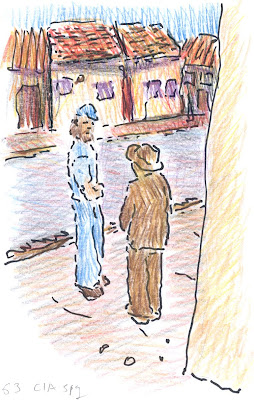
56.
Early next morning I am up and bargaining for a cheap ride to Cuzco.I get a good price for a place in the back of a Dodge truck, but little brown people wearing felt hats already occupy every bit of “sitting space”. I climb aboard last. They tie my backpack to the tailgate and we’re off. I stand in a surfer’s crouch, bending my knees to keep my balance. As we whip around mountain curves it takes all my strength to keep from being pitched overboard. Under me, between my legs actually, an old woman shepherds two loose, live chickens.
Up the mountainside and into the swirling fog: on the top of the mountain is a wide plateau with thousands of tiny pools reflecting bright blue sky and white clouds. We pass the straw-stack huts of the human inhabitants of this place and small herds of goats and llamas. These are the first out-of-zoo llamas I have ever seen.
It gets colder and starts to snow. Good grief, if the scenery wasn’t so spectacular I would be miserable indeed.
Over a 10,000-foot pass in a blizzard, then down into a valley where oranges and figs grow, and then back up into the mountains and we roll into Cuzco.
...










